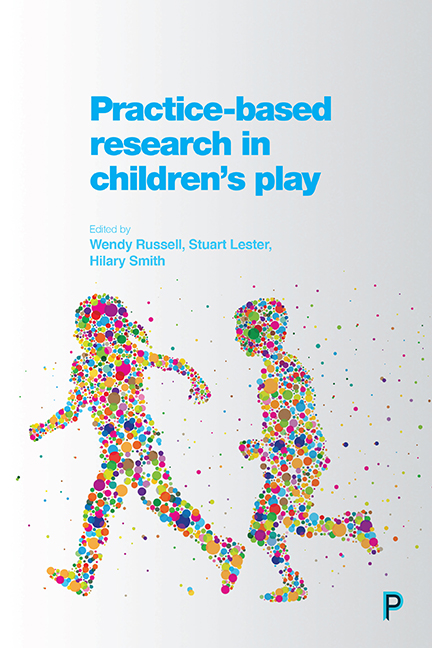Book contents
- Frontmatter
- Contents
- List of figures
- Notes on contributors
- Acknowledgements
- Foreword
- One Perspectives on play research: the practice-theory-research entanglement
- Part One Then and now: historical perspectives
- Part Two Here and there, this and that: spatial and creative perspectives
- Part Three Playfulness and wellbeing
- Closing thoughts
- Appendix: The Playwork Principles
- Index
Twelve - Therapeutic playwork: exploring playworkers’ perceptions of therapeutic playwork training and its usefulness in supporting children in afterschool clubs
Published online by Cambridge University Press: 05 April 2022
- Frontmatter
- Contents
- List of figures
- Notes on contributors
- Acknowledgements
- Foreword
- One Perspectives on play research: the practice-theory-research entanglement
- Part One Then and now: historical perspectives
- Part Two Here and there, this and that: spatial and creative perspectives
- Part Three Playfulness and wellbeing
- Closing thoughts
- Appendix: The Playwork Principles
- Index
Summary
Introduction
This study developed from observations that playworkers in afterschool clubs in a county in the south of England were struggling to respond to what they saw as challenging behaviour. The purpose of the study was to extend playworkers’ understanding of Sturrock and Else's (1998) model of therapeutic playwork and explore their perceptions of its usefulness in afterschool settings. They attended introductory training and then reflected on their practice.
Throughout their childhoods children deal with a range of issues, some more traumatic than others, for example, making and breaking friendships, parents returning to work, changing schools, moving house, hospitalisation, family reorganisation, bullying, separation and death. This is aside from the experiences of those labelled as ‘vulnerable’ (such as those in the care of the local authority, witnesses of domestic violence, those experiencing abuse or living with impairments or disorders). These issues, emotions and anxieties can manifest themselves in children's play (Axline, 1964; Sturrock and Else, 2005). Through freely chosen play (where the content and intent of play is driven by the child), children can explore themselves and the world around them. They may unconsciously or consciously play with and through issues which they are facing. Play is paradoxical; it is both real and unreal, seen as a safe place to express and explore reality and the imaginary, as events can be replayed, endings changed or games stopped. The signals (verbal and non-verbal) that send the message ‘this is play’ permit behaviour that may be unacceptable elsewhere; acts can be forgiven as ‘only playing’. In addition, psychodynamic theories of play suggest that playing has a latent, symbolic content beyond conscious articulation, alongside its manifest content (Sturrock and Else, 2005).
Many children spend a significant proportion of their time in childcare settings such as afterschool clubs (Wallace et al, 2009). As a local authority Childcare Development Officer, my work involved supporting the playworkers who worked in these settings. During my visits to childcare settings, playworkers voiced concerns about supporting children who showed anxieties and challenging behaviour in their play. Typical behaviour included swearing, shouting, aggression, bullying and teasing. The playworkers expressed a need to understand these play expressions and take on a more supportive role.
- Type
- Chapter
- Information
- Practice-Based Research in Children's Play , pp. 203 - 220Publisher: Bristol University PressPrint publication year: 2017

